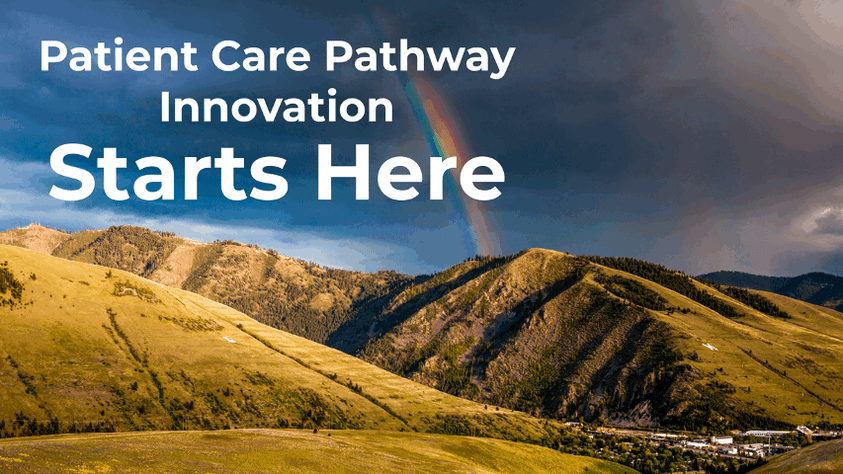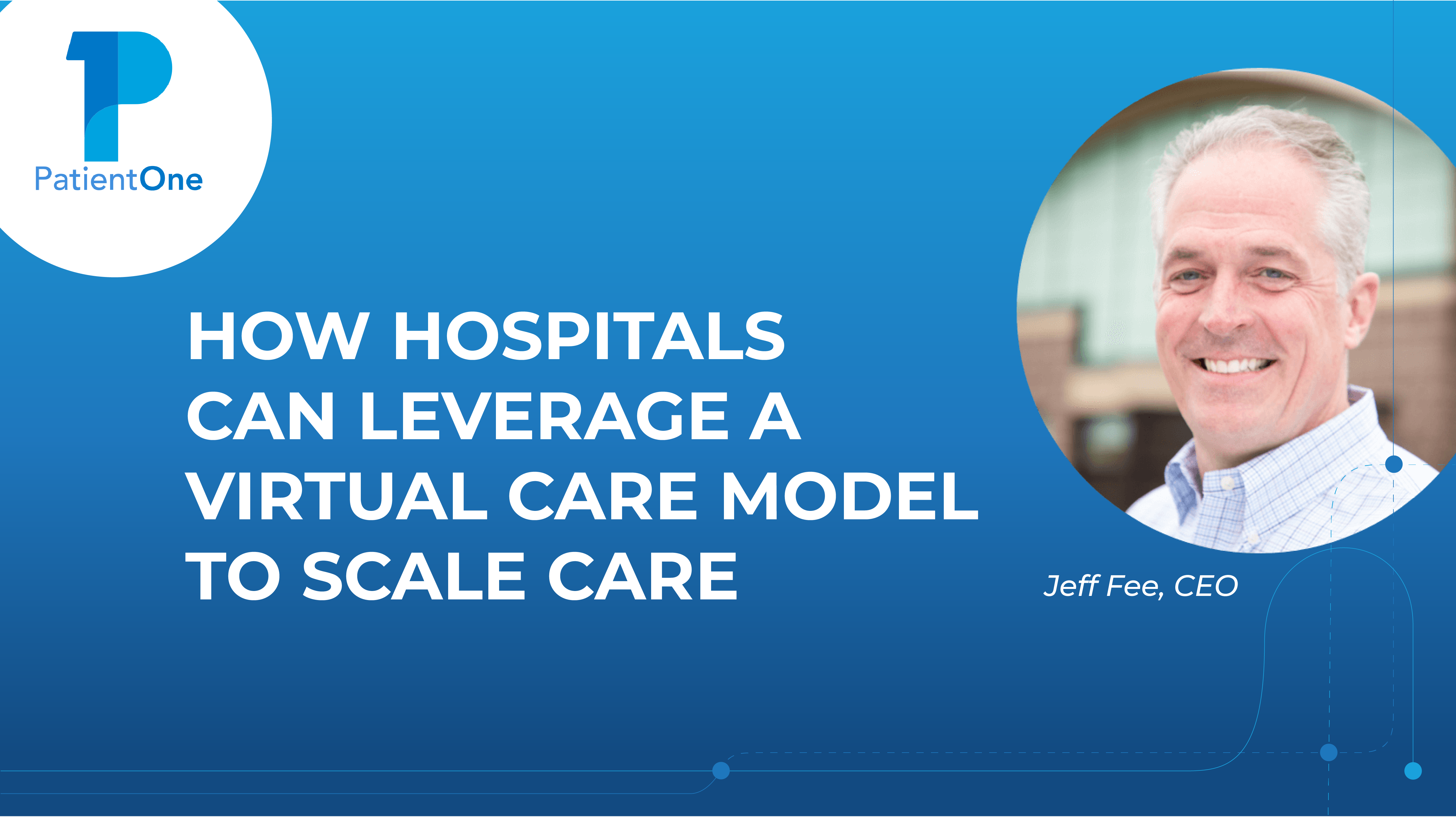Blog
Our latest news and thoughts
- All Posts
-
- Healthcare
- Remote Patient Monitoring
- Connected Care
- Patient Satisfaction
- Digital Innovation
- Standard of Care
- CMS
- Connected Health Devices
- Medicare
- Reducing Expenses
- Connected Health
- Patient Provider Relationship
- Bundled Payments
- Bundled Payments for Care Improvement
- Clinical Empathy
- Coronavirus
- Entrepreneurship
- Optimize Costs
- Physician Burnout
- Revenue
3 Success Factors in Scaling Our Montana-Based Startup
Topics: Entrepreneurship
July 16, 2020
by Jeff Fee, CEO

Did you know that 75% of capital is invested in just 3 states: California, New York, and Massachusetts? As CEO of a startup in Missoula, Montana, I’ve gained an appreciation for the special challenges that exist for startups outside of the traditional “tech hubs.”
But there’s a growing recognition that disruptive innovation is happening across the country in often overlooked places. This is why venture capitalist and AOL co-founder Steve Case created the Revolution Rise of the Rest Seed Fund, which has also invested in PatientOne.
I’ve also come to appreciate special advantages of our local entrepreneurial ecosystem that have helped us grow and scale PatientOne. According to a study commissioned by the Montana High Tech Business Alliance and funded by the Ewing Marion Kauffman Foundation, “The proportion of Inc. high-growth firms (in Montana) is higher than Denver (9th in the nation) and almost compatible with Washington, D.C. (1st in the nation).” This is fascinating and commendable, and I encourage you to access details to the full study, available here.
Below, I’ll review the PatientOne experience operating in this dynamic ecosystem, and how it’s contributed to our success:
Factor 1: Unfettered Access to Our Elected Delegation
Montana is a state with a lower barrier of access to our elected officials. Compared to larger or more populated states, there are simply fewer bureaucratic roadblocks. Fostering the right community connections allow access to government leaders at both the state and federal level, and this access can open doors to important opportunities conducive to entrepreneurial support.
As a founding member of the Missoula Economic Partnership, I can say with confidence that organizations like these that have grown out of the support of local government have been an integral part in supporting the local entrepreneurial ecosystem.
For example, in February 2014, reflected in part by the efforts of Senator Jon Tester and his staff, the Blackstone Charitable Foundation chose Montana as one of a handful of sites to locate the Blackstone LaunchPad, with offices on the campuses of the University of Montana and Montana State University. Since then, these LaunchPads have functioned as a one-stop shop for students, alumni, and faculty and area entrepreneurs, coaching them to explore multi-dimensional aspects of the entrepreneurship journey – such as business plan, financing, and team building – and connecting them to other local support resources.
Factor 2: Financial and Organizational Support from Private Business
Something very unique in Montana is the valuable contributions provided by private enterprise to support local entrepreneurs.
For instance, we have a business accelerator called C2M Beta that’s funded by Montana telecommunications co-op, Blackfoot Telecommunications. C2M stands for two things – Connect More and Concept 2 Market. We were their first cohort, and truly, they’ve helped us operationalize all the advice we were given. They’ve also generously allowed us to house our offices in their C2M Accelerator Space.
In addition to this, Blackfoot has allowed us access to their knowledge and staff resources. For example, if I need guidance on a certain issue with human resources, I can pick up the phone and call their human resource executive.
When you really stop to think about Blackfoot is doing – truly making an investment without asking for equity to help others succeed – it’s quite exceptional on many levels.
As mentioned above, another unique resource we have here in Missoula is the Blackstone Launchpad at the University of Montana. This is a partnership between Blackstone (a venture capital firm), Techstars (a global start-up accelerator), and the university. This partnership is a trifecta of cooperation between the private sector, the nonprofit sector, and higher education.
Having this resource in our community, along with the connections we’ve been able to build there, has also been a significant help. For example, our start up was able to secure invaluable consultations from some of Blackfoot’s senior leadership team as we were building out our team and strategy. One of the move valuable sessions was on developing a relevant sales strategy and resultant sales approach. Having run hospitals for over 25 years, I knew how to “sell” my hospital but knew practically nothing about taking a concept to market effectively and efficiently. Leaning in on Blackfoot’s sales executives provided incredible insight that we simply would not have received otherwise.
Factor 3: The Support of Investors Who Invest Outside the Silicon Valley Box
An encouraging development in the investor space is the onset of firms and investors who seek out promising companies that reside out of the start-up hotspots of Silicon Valley, Boston, and New York. This is great in a state like Montana, where start-ups get great visibility and don’t get “lost in the noise.”
A key strategy I’ve employed to secure funding is to actively seek out investors who specialize in early stage companies, who focus on the seed round. Participating in the Boomtown accelerator program in Boulder, CO really got our foot in the door with investors. Nearly all of our investors are from the Midwest – Omaha, Montana, and Colorado. The one exception is the aforementioned D.C. based Revolution – a group that focuses specifically on helping entrepreneurs “build the next generation of transformative companies in cities across the U.S.” Their focus really is on the folks outside of the tech hot-spots mentioned above.
Scaling PatientOne has had its share of challenges, but being a part of the strong business network in Montana has been encouraging and integral in our success. If you’re a start-up leader outside of the typical start-up zones, I hope these factors have given you insight and encouragement as you carry on with your venture.



